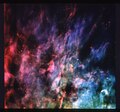File:"Window-Curtain" Structure of the Orion Nebula (1990-26-29).tif
From Wikimedia Commons, the free media repository
Jump to navigation
Jump to search

Size of this JPG preview of this TIF file: 643 × 600 pixels. Other resolutions: 257 × 240 pixels | 515 × 480 pixels | 823 × 768 pixels | 1,098 × 1,024 pixels | 2,196 × 2,048 pixels | 2,748 × 2,563 pixels.
Original file (2,748 × 2,563 pixels, file size: 13.32 MB, MIME type: image/tiff)
File information
Structured data
Captions
Captions
Recent images made with the Wide Field/Planetary Camera on NASA's Hubble Space Telescope have revealed the structure of a thin sheet of gas located at the edge of the famous "Great Nebula" in Orion, an estimated 1500 light years from Earth.
Summary[edit]
| Description"Window-Curtain" Structure of the Orion Nebula (1990-26-29).tif |
English: Recent images made with the Wide Field/Planetary Camera on NASA's Hubble Space Telescope have revealed the structure of a thin sheet of gas located at the edge of the famous "Great Nebula" in Orion, an estimated 1500 light years from Earth. Astronomers, who compare the appearance of this sheet of gas with that of a rippled window curtain, report that this emission traces the boundary between the hot, diffuse interior of the nebula and an adjacent dense cool cloud. The sheet is seen in light emitted by atoms of gaseous sulfur (shown in red in the photograph). This emission is strongest under conditions which are intermediate between those in the interior of nebula and those in the dense cloud. The sulfur emission is seen to break into filamentary and clumpy structures with sizes down to the limit of what the telescope can show. In contrast, emission from gaseous oxygen and hydrogen (shown as blue and green, respectively) is favored in the interior of the nebula itself, and is distributed much more smoothly in the image. The Orion Nebula is a "stellar nursery" - a region where new stars are forming out of interstellar gas. The emission from the nebula is powered by the intense ultraviolet light from a cluster of particularly hot and luminous stars. The sulfur emission seen in the photograph is coming from the region where the light from these stars is "boiling off" material from the face of the dense cloud. This is the very cloud from which the hot stars formed, and is known to harbor additional ongoing star formation. Astronomers say that this is a good example of a case where, despite the spherical aberration that has hobbled many of the scientific programs which the Hubble Space Telescope was expected to carry out, the telescope can still be used to obtain scientifically interesting data with clarity far exceeding that normally possible from the ground. The Wide Field/Planetary Camera was designed and built by the Jet Propulsion Laboratory, which is operated by the California Institute of Technology. |
| Date | 4 October 1990 (upload date) |
| Source | "Window-Curtain" Structure of the Orion Nebula |
| Author | Credit: NASA, ESA, and STScI |
| Other versions |
|
Licensing[edit]
| Public domainPublic domainfalsefalse |
| This file is in the public domain because it was created by NASA and ESA. NASA Hubble material (and ESA Hubble material prior to 2009) is copyright-free and may be freely used as in the public domain without fee, on the condition that only NASA, STScI, and/or ESA is credited as the source of the material. This license does not apply if ESA material created after 2008 or source material from other organizations is in use. The material was created for NASA by Space Telescope Science Institute under Contract NAS5-26555, or for ESA by the Hubble European Space Agency Information Centre. Copyright statement at hubblesite.org or 2008 copyright statement at spacetelescope.org. For material created by the European Space Agency on the spacetelescope.org site since 2009, use the {{ESA-Hubble}} tag. |
File history
Click on a date/time to view the file as it appeared at that time.
| Date/Time | Thumbnail | Dimensions | User | Comment | |
|---|---|---|---|---|---|
| current | 20:01, 13 September 2023 |  | 2,748 × 2,563 (13.32 MB) | OptimusPrimeBot (talk | contribs) | #Spacemedia - Upload of https://stsci-opo.org/STScI-01EVTBAKR4RDSH75EQRZHMB46X.tif via Commons:Spacemedia |
You cannot overwrite this file.
File usage on Commons
There are no pages that use this file.
Metadata
This file contains additional information such as Exif metadata which may have been added by the digital camera, scanner, or software program used to create or digitize it. If the file has been modified from its original state, some details such as the timestamp may not fully reflect those of the original file. The timestamp is only as accurate as the clock in the camera, and it may be completely wrong.
| Width | 2,748 px |
|---|---|
| Height | 2,563 px |
| Bits per component |
|
| Compression scheme | LZW |
| Pixel composition | RGB |
| Number of components | 3 |
| Number of rows per strip | 1 |
| Horizontal resolution | 2,700 dpi |
| Vertical resolution | 2,700 dpi |
| Data arrangement | chunky format |

